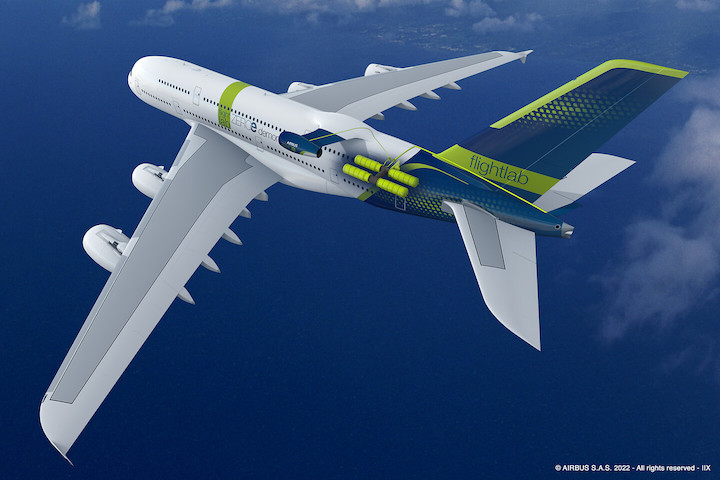The Airbus A380 represents the last superjumbo of a bygone, kerosene-guzzling era. Now the double-decker will serve as the unlikely test bed to help the industry fly into a fuel-efficient future.
Airbus SE will use a model to test its first propulsion system using hydrogen, a fuel the planemaker wants to introduce on a new passenger aircraft by 2035. The modified jetliner, the first of its kind that Airbus ever built, will maintain its four conventional turbines, while a fifth engine adapted for hydrogen use will be mounted on the rear fuselage.

The hydrogen test program will give at least one of the troubled jumbo jets, consigned to the commercial scrap heap even before the pandemic, a second life as it tests the new technology.
Bloomberg reported on Monday that Airbus was poised to announce the collaboration with CFM, a joint venture of General Electric Co. and Safran SA.
While hydrogen is still under research for use in jet engines, Airbus is attempting to rally the aviation industry behind the technology as it faces mounting pressure to reduce emissions that lead to global warming. Last year, the airline industry’s main trade group endorsed a plan to reach net-zero carbon emissions by the middle of the century.
“To achieve these goals by 2050 the industry has to take action now and we are,” said Gael Meheust, CFM’s chief executive officer.
Flight Plan
The demonstrator is set to begin flying in the middle of this decade. While a commercial product will be much smaller, the development plan allows Airbus to take advantage of the A380’s size to give engineers room for extra tanks, testing equipment, and the fifth engine at the back, executives said.
The main deck of the aircraft will have four hermetically sealed hydrogen tanks and a distribution system to the engine, a modified GE Passport turbofan. That smaller-scale version of CFM’s LEAP engine was originally designed for the business jet market and was chosen because of its light weight.
Airbus will carry out ground tests this year, then convert the aircraft, targeting flight tests by the end of 2026. This is in line with the company’s existing timetable to make its technology choices by 2027 and launch a hydrogen jet by 2035, Chief Technology Officer Sabine Klauke said.
Airbus rival Boeing Co. is testing hydrogen fuel cells on its ScanEagle3 pilotless military drone, while expressing skepticism about the 2035 target for commercial jetliners.
Safran has called hydrogen a “promising candidate” for future aircraft models, and has been developing materials and fuel-system adjustments to be used with the technology.
With manufacturers gearing up to ultimately make the shift to zero-emission flying, enginemakers GE, Safran, Pratt & Whitney and Rolls-Royce Holdings Plc will all compete for a share of the new market.
Rolls-Royce, which currently specializes in widebody engines, has said it is now considering a return to the single-aisle market and is speaking to both planemakers about possible opportunities. Pratt, a unit of Raytheon Technologies Corp., said Monday that it received U.S. Department of Energy funding to further its work on hydrogen propulsion.









